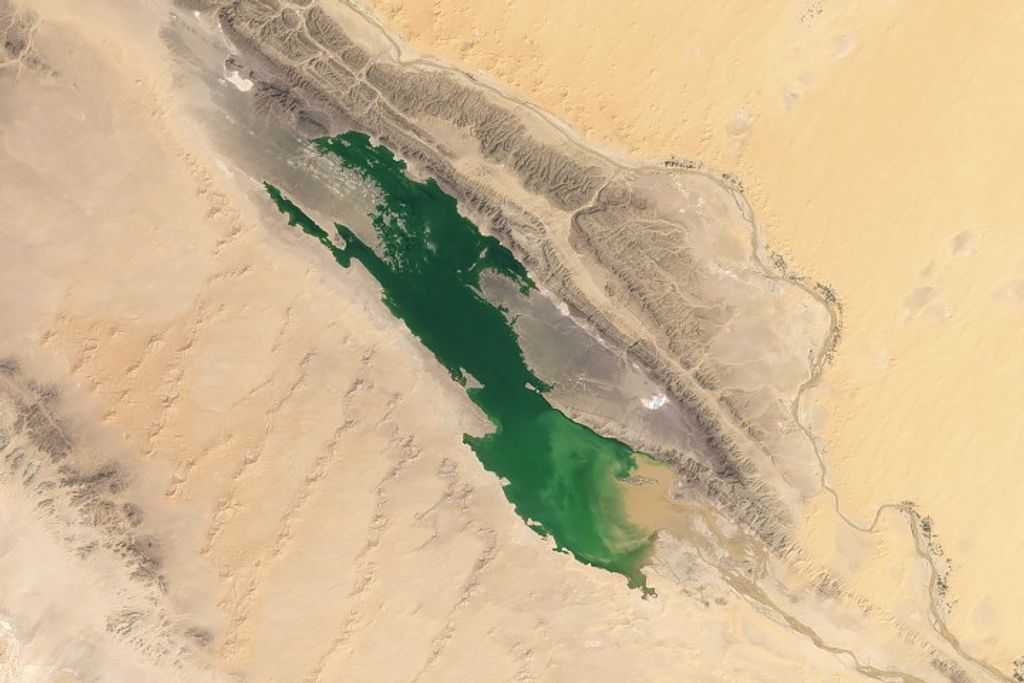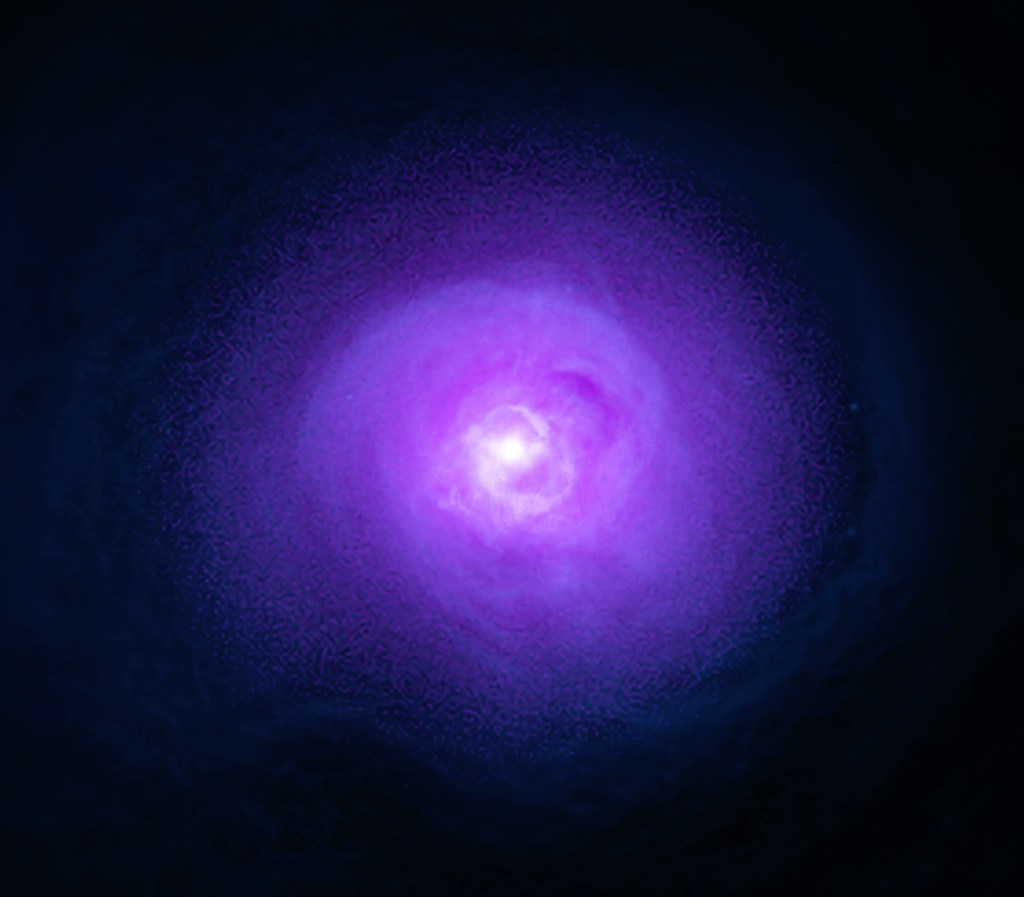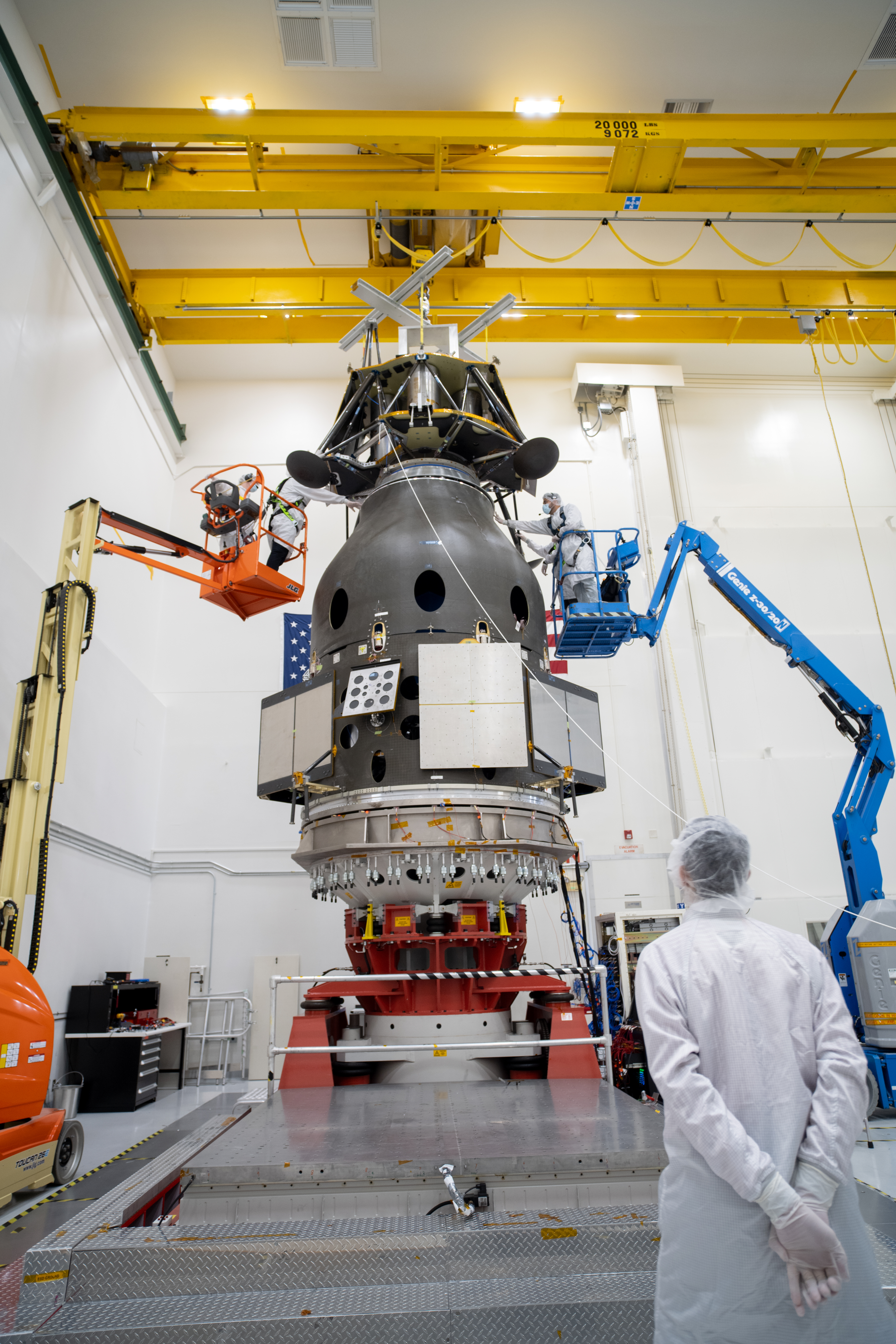The National Aeronautics and Space Administration's Surveyor I spacecraft made a perfect low-speed, three-point landing on the moon on June 1, 1966, after a 63-hour, 36-minute flight from Cape Kennedy.
During the following 12 days and 10 hours, before the sun set on Surveyor's landing site in the Ocean of Storms last Tuesday, the sps survey television camera scanned for transmission to Earth 10,338 high-resolution pictures of the lunar surface.
With its camera shut down for the duration of the two-week-long lunar night, Surveyor is now periodiclly queried concerning its condition--voltages, temperatures and battery power capacity--by round-the-world stations of NASA's Deep Space Network.
In a few days, the spacecraft will go deeper into "hibernation", conserving its stored electrical energy and expending only enough to keep itself warm in an effort to survive the long, cold night. The only systems which will function in this power-conservation fashion are the radio receivers to accept Earth commands at lunar dawn and thermal control heaters for the protection of temperature-sensitive electronics. The surface of the moon reaches a temperature of about 260 degrees F. below zero at lunar midnight.
Designed and built for NASA by the Hughes Aircraft Company of Culver City, California, under technical direction of the Jet Propulsion Laboratory, Surveyor greatly exceeded its primary objectives by gathering surface data necessary to the Apollo manned lunar landing program.
The first of seven lunar soft landing missions planned for 1966 and 1967, Surveyor I was designated an engineering test flight for demonstration of the Atlas-Centaur launch vehicle; mid-course and terminal maneuvers by the spacecraft; a radar-and-rocket-controlled soft landing; and maintenance of constant communications between the spacecraft and the Deep Space Network ground stations during the flight and after landing.
Surveyor I lifted off Pad 36-A at Cape Kennedy within one second of its planned launch time--7:41:01 a.m. Pacific Daylight Time--on May 30.
The perfect countdown was followed by a boost into space by the Atlas-Centaur that would have put the spacecraft on the moon within 250 miles of the aiming point. The precise launch made the requirement for a trajectory correction some 16 hours later one of minimum proportion. At the mid-course maneuver, the velocity change was 45 miles per hour, only a fraction of which was applied to the slight injection error.
All launch vehicle and spacecraft events through Canopus acquisition occurred satisfactorily and at nominal times with the exception of the deployment of one of Surveyor's two low-gain omnidirectional antennas.
Both antennas and the spacecraft's three landing legs were commanded by the Centaur programmer about 12 minutes after liftoff to extend from their folded launch position to the flight and landing position. Signal strength received from the transmitter connected to Antenna A indicated that it apparently had not deployed fully, if at all.
Two-way communications lock--ground command capabilitity--was achieved by the Deep Space Net station in Johannesburg, South Africa, at liftoff plus 28 minutes, transferring control of the mission from the Eastern Test Range to the Space Flight Operations Facility at the Jet Propulsion Laboratory in Pasadena, California. Commands were transmitted immediately to Surveyor to deploy the antenna in question, but telemetry and signal strength readings indicated no change.
Although the minor faiure was not expected to jeopardize the mission--either from the standpoint of communications or the slight change in the spacecraft's center of gravity--the exact position of Antenna A remained undetermined throughout the flight, a concern in itself.
(Later, however, after Surveyor I touched gently down on the moon, signal strength from the antenna had risen to normal, indicating that it was properly extended. Television pictures from Surveyor's camera of the both the antenna and its latching mechanism provided verification of this. It remains unknown whether the antenna deployed during retro fire or upon spacecraft contact with the lunar surface.)
Surveyor's original aiming point was 3.25 degrees south of the lunar equator and 43.83 degrees W. Longitude in the southwest portion of the Ocean of Storms. In planning the mid-course maneuver, executed at 11:45 p.m. PDT May 30, the Surveyor space science analysis team selected a new target about one degree farther north in latitude. The new coordinates were 2.33 degrees South, 43.83 degrees West, a point scientists expected to be smooth enough for a safe landing. Tracking data throughout the remainder of the flight indicated Surveyor landed at 2.356 degrees South and 43.36 degrees West, about nine miles from the modified aiming point.
The critical terminal descent began 31 minutes and 2000 miles from the moon at 10:46 p.m. PDT June 1 with roll and yaw maneuvers to align Surveyor's retro rocket with its approach direction, just five degrees from vertical.
At 11:14 and 39 seconds, an altitude marking radar sensed the nearness of the moon--59.35 miles altitude--and started the automatic sequence that fired the spacecraft's main retro motor 10 seconds later.
The 9000-pound-thrust solid propellant rocket ignited at two minutes and 46 seconds before touchdown when Surveyor I was 46.75 miles above the moon and traveling at a velocity of 5840 miles per hour.
The 38-second main retro phase slowed the spacecraft to 267 miles an hour at 35,000 feet altitude. The rocket motor case was ejected at 31,000 feet, and three smaller rocket engines, which stabilized the spacecraft during main retro fire and earlier powered the mid-course maneuver, continued to slow the descent.
Throttled by information from Surveyor's radar altimeter and doppler velocity sensor (RADVS), the verniers reduced the spacecraft's speed to 71.4 miles per hour at 1000 feet altitude and 2.8 miles an hour when they cut off about 10 feet above the surface.
Surveyor free-fell the last 10 feet of the flight, its first leg touching the lunar surface at 11:17:35.651 p.m. PDT. Within 19 milliseconds it had three feet on the moon. Landing speed was about 7.5 miles per hour.
Strain gauge readings from the three landing legs recorded a "second touchdown" less than one second later, indicating that the spacecraft bounced about four or five inches.
Television pictures taken by Surveyor during the next several weeks showed that at least one of the three crushable blocks under its frame gouged the lunar surface as the shock absorbers compressed at touchdown. The aluminum honeycomb block made a "cookie cutter" imprint on the moon just below the spacecraft.
After a series of engineering interrogations to confirm that all spacecraft system had indeed survived the landing, Surveyor I took the first of more than 10,000 pictures at 11:53 p.m. PDT June 1. The 200-scan-line, wide-angle (25degree field of view) picture showed a portion of the spacecraft framed against the surface of the moon.
Thirteen additional 200-line pictures were transmitted to the Pioneer station of the Goldstone Space Communications Complex in California before the solar panel was positioned for power conversion and Surveyor's high-gain antenna was poined at the Earth for transmission of higher quality 600-line pictures.
With the high-gain antenna so positioned and the ease with which it was maneuvered during the following days, the Surveyor camera never returned to the 200-line mode. Picture count at lunar sunset on June 14 was 200-line pictures, 14; 600-line pictures, 10,324.
A scan conversion system at JPL made it possible to display Surveyor pictures in real time on conventional TV monitors at the Laboratory as they were relayed from the moon via microwave from Goldstone. During the night of June 1 and the morning hours of June 2 when Surveyor took its first 144 pictures, commercial television networks further relayed the live lunar program throughout the nation. The Early Bird satellite carried the pictures even further--to Europe.
Nearly all the television pictures were commanded and recorded by the Goldstone station during communications periods that varied from 8 to 10 hours each day. A few picture sequences originated at the Deep Space Net station at Canberra, Australia, which, along with the Johannesburg station, served as prime monitors of engineering telemetry from Surveyor. The Madrid, Spain, station and the Mars Site (210-foot antenna) at Goldstone were backup stations during the mission.
More than 82,000 ground commands to Surveyor were transmitted from the Goldstone station from May 30 to June 14. During its most productive session over Goldstone, last Friday, Surveyor took 1758 pictures of the moon and received and acted upon more than 12,000 commands. Six hours and 37 minutes of the 10-hour, 20-minute communications pass were devoted to picture transmission.
Early in the mission, it was expected that the camera would necessarily be shut down for several days at lunar mid-day because of the extreme heat. However, at lunar high noon on June 7, as the moon's surface temperature approached 250 degrees F., the camera was shaded by the solar panel and the high-gain antenna and continued to operate within its thermal limits. The camera was de-activated June 8 and 9 when it was exposed to the sun.
In addition to the lunar surface pictures taken by Surveyor's camera from its vantage point only four feet above the surface, the spacecraft performed a number of other postlanding operations. Moon's-eye views of the bright stars Sirius and Canopus were photographed by the camera in an effort to ascertain more closely the exact location of Surveyor on the lunar surface.
On June 6, an attempt was made to photograph a portion of the Earth, but the planet was just out of view, above the elevation range of the tilting mirror of the camera.
Several attempts were made to disturb the lunar surface or create a small dust cloud near one of the spacecraft's three landing feet by firing bursts of nitrogen gas from Surveyor's attitude control jets. No disturbance or dust was discernible in TV pictures taken during and after the firings.
Because of the continuing excellent condition of the spacecraft after it had operated on the moon for more than a week, it became apparent that Surveyor had a strong chance of surviving the lunar night. This possibility was taken into account during formulation of plans for the spacecraft's opration on the final day of sunlight June 14.
During the final Goldstone pass, the camera recorded another 523 pictures as the sun sank lower toward the horizon. Many of the pictures taken with the low sun behind the spacecraft showed perfect silhouettes of Surveyor shadowed against the moon's surface.
At lunar sunset, 9:18 a.m. PDT June 14, the camera was commanded to point toward that portion of the horizon where the fireball disappeared and a number of pictures were taken of the solar corona, the sun's upper atmosphere.
Surveyor I made its last picture at 9:37 a.m. PDT after night had fallen on the spacecraft's small segment of the Ocean of Storms. A single picture, taken in the camera's special "integrated mode" with a four-minute exposure time, portrayed Surveyor's footpad No. 2 lighted only by the sun's reflection off the Earth.
When the camera was turned off for the 14-day-long lunar night, temperatures already were dropping rapidly on the spacecraft. The battery, however, was nearly fully charged with a capacity of 162 ampere hours. Maximum capacity of the battery is 165 hours. At touchdown on June 1, telemetry indicated 57 ampere hours.
If Surveyor survives the night, it is expected that several days after dawn it will have "defrosted" to the point where a slow charge of the battery from the solar cells might spring the spacecraft back to life. The solar panel has been positioned so that the sun will not strike the power-converting cells, sending a sudden surge of current into the chilled electronics systems.
With the radio receivers still operating, ground commands would slowly step the panel toward the sun for a slow and easy charge and possibly another lunar day of life for Surveyor I.






























